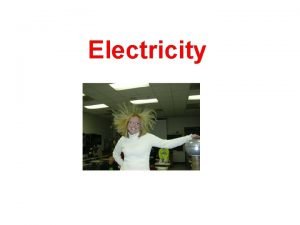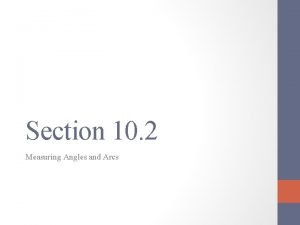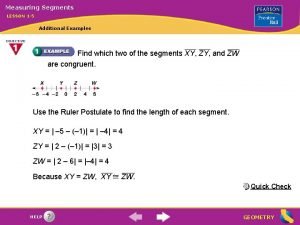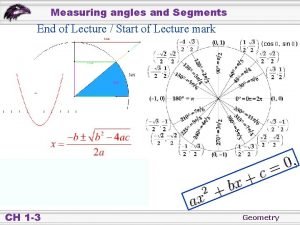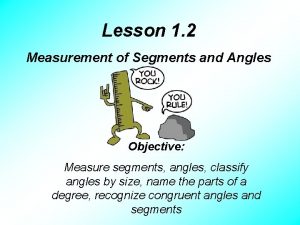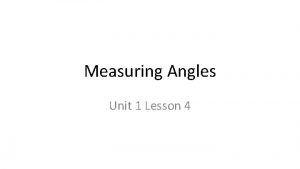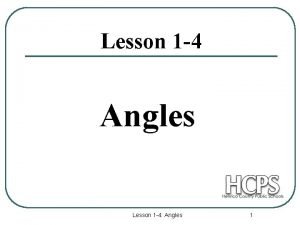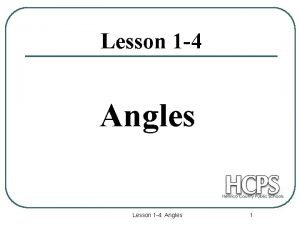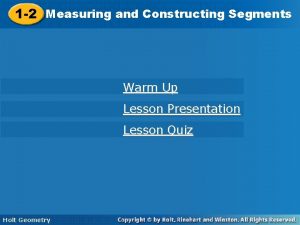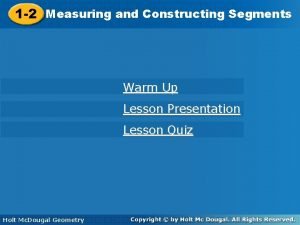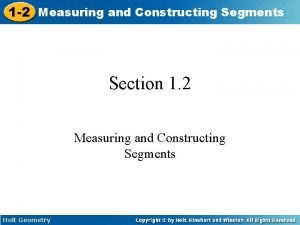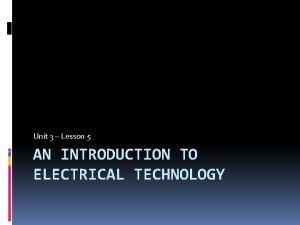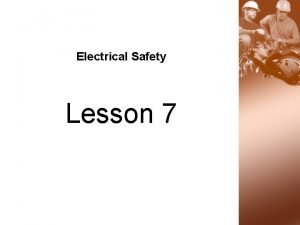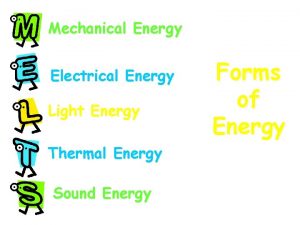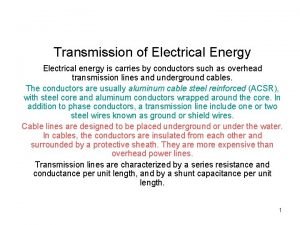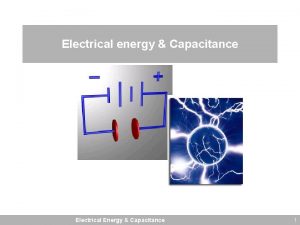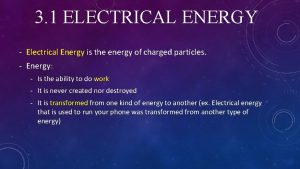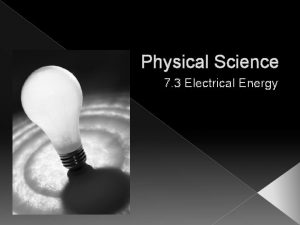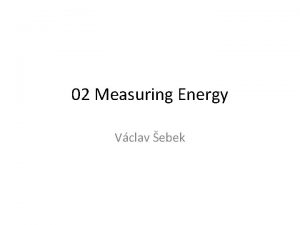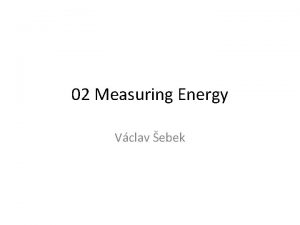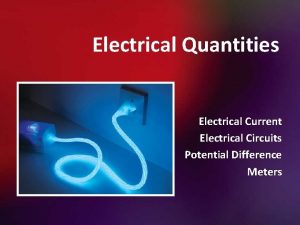Measuring Electrical Energy Lesson 11 Measuring Electrical Energy






















- Slides: 22

Measuring Electrical Energy Lesson 11

Measuring Electrical Energy What is Energy? • Energy- The ability to do work • Electrical Energy- The energy transferred to an electrical load by moving charges.

• The symbol for electrical energy is E and the SI unit for measuring energy is called the joule. • 1 joule is a very small amount of energy so we use Watt hour and Kilowatt hour.

• 1 watt hour = 3600 joules. • 1 kilowatt hour = 1000 watt hours.

Observing sample circuits • Circuit 1 has two 1. 5 volt batteries in series producing a total of 3. 0 volts. The circuit can keep the bulb lit for 5 hours.

• Circuit two has two 1. 5 volt batteries in series producing a total of 3. 0 volts. There are two bulbs in parallel in this circuit which can stay lit for 2. 5 hours.

Why does circuit two 2 last half of the time that circuit 1 does? • It is using more energy.

Calculating Electrical Energy • We can use a formula to calculate the amount of energy used in household appliances. • Energy = Power x Time • k. Wh k. W h • Total Energy Used = Speed That Electricity is used x How long electricity is used

How much energy is that? • Examples : • How many kilowatt hours of electrical energy are used by a kettle that has a power rating of 1. 5 k. W and is operated for 1. 0 hours? • Energy = Power x Time • E=Px. T • E = 1. 5 k. W x 1. 0 hour • E = 1. 5 k. Wh

• Using a vacuum cleaner runs 2 for hours with a power rating of 1. 6 k. W. • E=Pxt • E = 1. 6 k. W x 2 h • E = 3. 2 k. Wh

• Mowing a lawn for 3. 5 hours with a mower that has a rating of 1. 65 k. W. • E=Pxt • E = 1. 65 k. W x 3. 5 h • E = 5. 78 k. Wh

Something to remember • Power must be in k. W • 1000 W = 1 k. W • To change from W to k. W divide by 1000

Example • • Example 1 400 W = ? k. W 400 ÷ 1000 = 0. 4 k. W

Example • • Example 2 15 W = ? k. W 15 ÷ 1000 = 0. 015 k. W

Example • • Example 3 3750 W = ? k. W 3750 ÷ 1000 = 3. 75 k. W

• Time must be in hours • 60 minutes = 1 hour • To change from min to hours divide by 60

• • Example 1 45 min = ? h 45 ÷ 60 = 0. 75 hours

• • Example 2 5 min = ? h 5 ÷ 60 = 0. 08 hours

• • Example 3 90 = ? h 90 ÷ 60 = 1. 5 hours

More examples Using a stereo with a rating of 30 W for 2 hours. • E=Pxt • E = (30 W ÷ 1000) x 2 h • E = 0. 03 k. W x 2 h • E = 0. 06 k. Wh

• Using a blender with a rating of 390 W for 20 minutes. • E=Pxt • E = (390 W ÷ 1000) x (20 min ÷ 60) • E = 0. 39 k. W x 0. 33 h • E = 0. 13 k. Wh

Word Problems I (5)
 Gravitational potential energy definition
Gravitational potential energy definition How to convert mechanical energy to electrical energy
How to convert mechanical energy to electrical energy Electric current flows in
Electric current flows in Arcs
Arcs The mole lesson 9.1 measuring matter
The mole lesson 9.1 measuring matter Lesson 1-1 measuring segments and angles
Lesson 1-1 measuring segments and angles Quiz 3 special angles and segments
Quiz 3 special angles and segments Lesson 1 hands on angles
Lesson 1 hands on angles Lesson 4 measuring angles
Lesson 4 measuring angles Vertical angles
Vertical angles Lesson 1-4 measuring angles answers
Lesson 1-4 measuring angles answers Congruent line segment example
Congruent line segment example Lesson 1-2 measuring and constructing segments
Lesson 1-2 measuring and constructing segments Measuring and constructing segments
Measuring and constructing segments Measuring and constructing segments
Measuring and constructing segments Measuring and expressing enthalpy changes
Measuring and expressing enthalpy changes Lesson 5 introduction to electrical devices
Lesson 5 introduction to electrical devices Lesson 1 electrical safety culture
Lesson 1 electrical safety culture Electrical safety worksheet answers
Electrical safety worksheet answers Lesson 1: electrical safety culture
Lesson 1: electrical safety culture Lesson 5: electrical nonmetallic tubing (ent)
Lesson 5: electrical nonmetallic tubing (ent) Energy energy transfer and general energy analysis
Energy energy transfer and general energy analysis Energy energy transfer and general energy analysis
Energy energy transfer and general energy analysis


